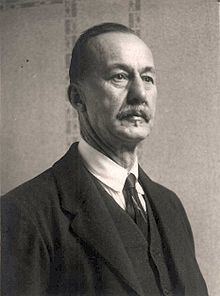Nationality Austrian Role Mathematician | Name Wilhelm Wirtinger | |
 | ||
Institutions University of InnsbruckUniversity of Vienna Doctoral students see the "Teaching activity" section Known for Complex analysis of one and several variablesGeometry Similar People Wilhelm Blaschke, Emil Weyr, Leopold Vietoris | ||
Wilhelm Wirtinger (15 July 1865 – 15 January 1945) was an Austrian mathematician, working in complex analysis, geometry, algebra, number theory, Lie groups and knot theory.
Contents
Biography
He was born at Ybbs on the Danube and studied at the University of Vienna, where he received his doctorate in 1887, and his habilitation in 1890. Wirtinger was greatly influenced by Felix Klein with whom he studied at the University of Berlin and the University of Göttingen.
Honours
In 1907 the Royal Society of London awarded him the Sylvester Medal, for his contributions to the general theory of functions.
Research activity
He worked in many areas of mathematics, publishing 71 works. His first significant work, published in 1896, was on theta functions. He proposed as a generalization of eigenvalues, the concept of the spectrum of an operator, in an 1897 paper; the concept was further extended by David Hilbert and now it forms the main object of investigation in the field of spectral theory. Wirtinger also contributed papers on complex analysis, geometry, algebra, number theory, and Lie groups. He collaborated with Kurt Reidemeister on knot theory, showing in 1905 how to compute the knot group. Also, he was one of the editors of the Analysis section of Klein's encyclopedia.
During a conversation, Wirtinger attracted the attention of Stanisław Zaremba to a particular boundary value problem, which later became known as the mixed boundary value problem.
Teaching activity
A partial list of his students includes the following scientists:
